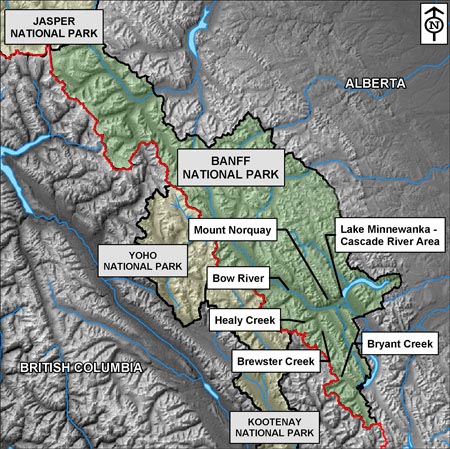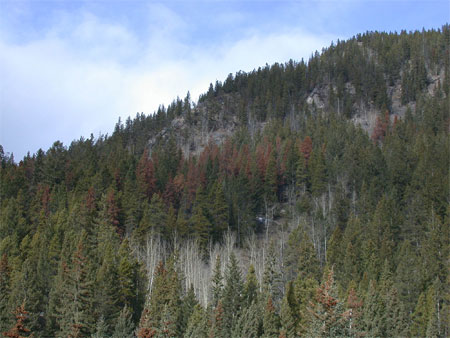Banff National Park
 |
Banff National Park: Living with a natural beetle species
 |
Banff quick beetle facts:
- Banff had a minor outbreak between 1940-43, a smaller outbreak in the 1970's and early 1980s in the Upper Spray Valley.
- Areas impacted in the late 90’s included Brewster Creek, Healy Creek and Bryant Creek drainages.
- The Bryant Creek population wasn’t able to sustain itself and consequently died out.
- The number of beetle killed trees continued to increase in Healy and Bryant Creeks.
- The Brewster creek population is declining.
- In 2003 - for the first time - mountain pine beetle killed trees were mapped along the Bow River between Mount Cory and Castle Junction, and in the Lake Minnewanka-Cascade River area.
In 1997 the annual insect and disease survey found that mountain pine beetle had dispersed across the Continental Divide into Banff, landing in Brewster Creek, Healy Creek and Bryant Creek drainages. Since then the beetle population has grown and migrated eastward. When driving through Banff you can see red, beetle killed trees on Mount Norquay and along the Sunshine road.
 Mountain pine beetle colonized trees on Mount Norquay area. Mountain pine beetle colonized trees on Mount Norquay area.© Parks Canada / Heather Dempsey |
In 2003, the prescribed burn in the Fairholme range and selected tree removal in the Tunnel Mountain area reduced the number of beetles expected to populate those areas. The burning has removed good mountain pine beetle habitat in the Fairholme, and it is expected that there will be further declines in beetle activity in that area.
To see what tools the Mountain Parks are using to manage mountain pine beetle, click here.
What is a hectare?
1 hectare = 100 metres x 100 metres
1 hectare = 2.47 acres
1 hectare = Approximately 2 football fields (side by side)
100 hectares = 1 square kilometre
- Date modified :